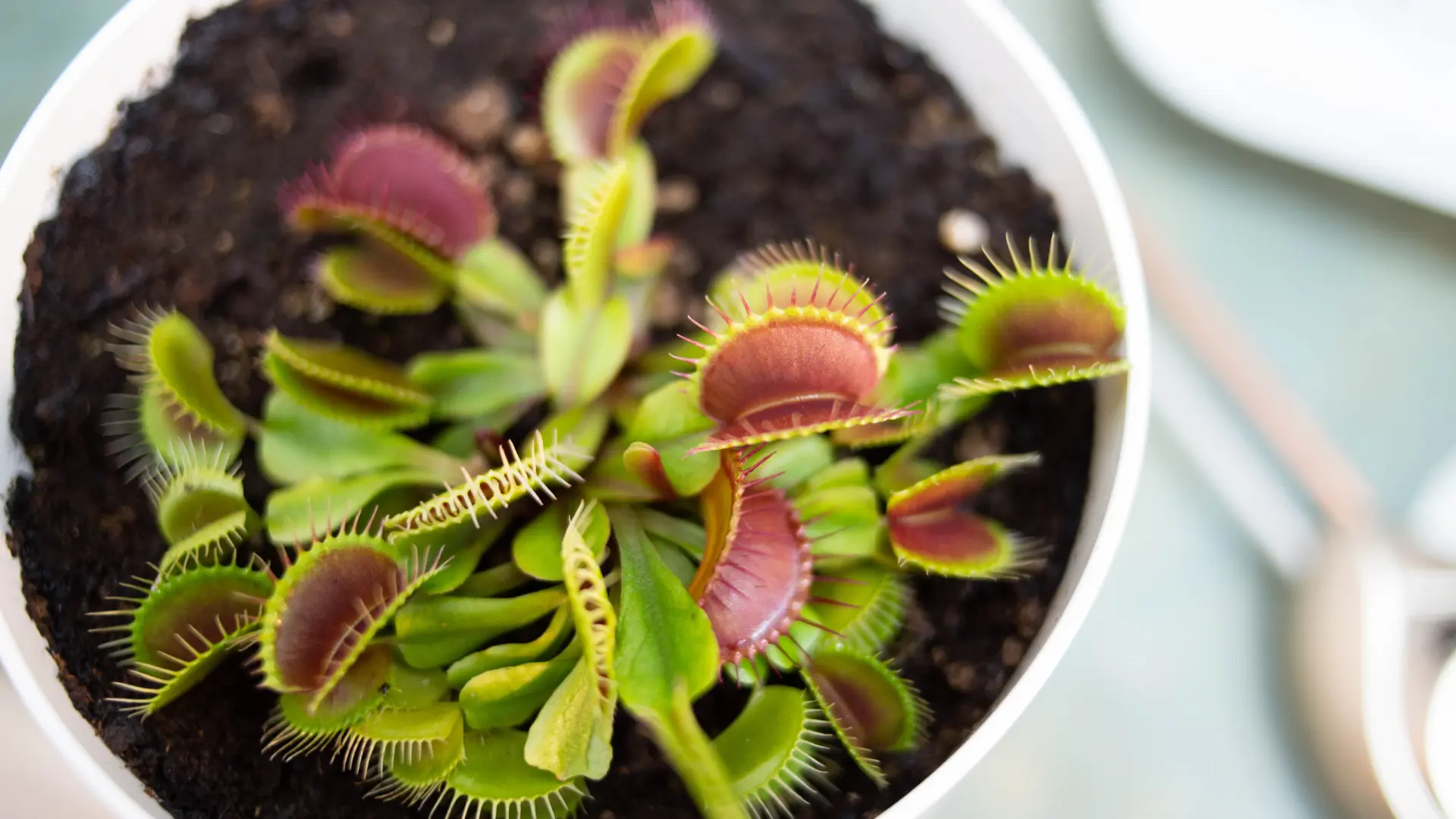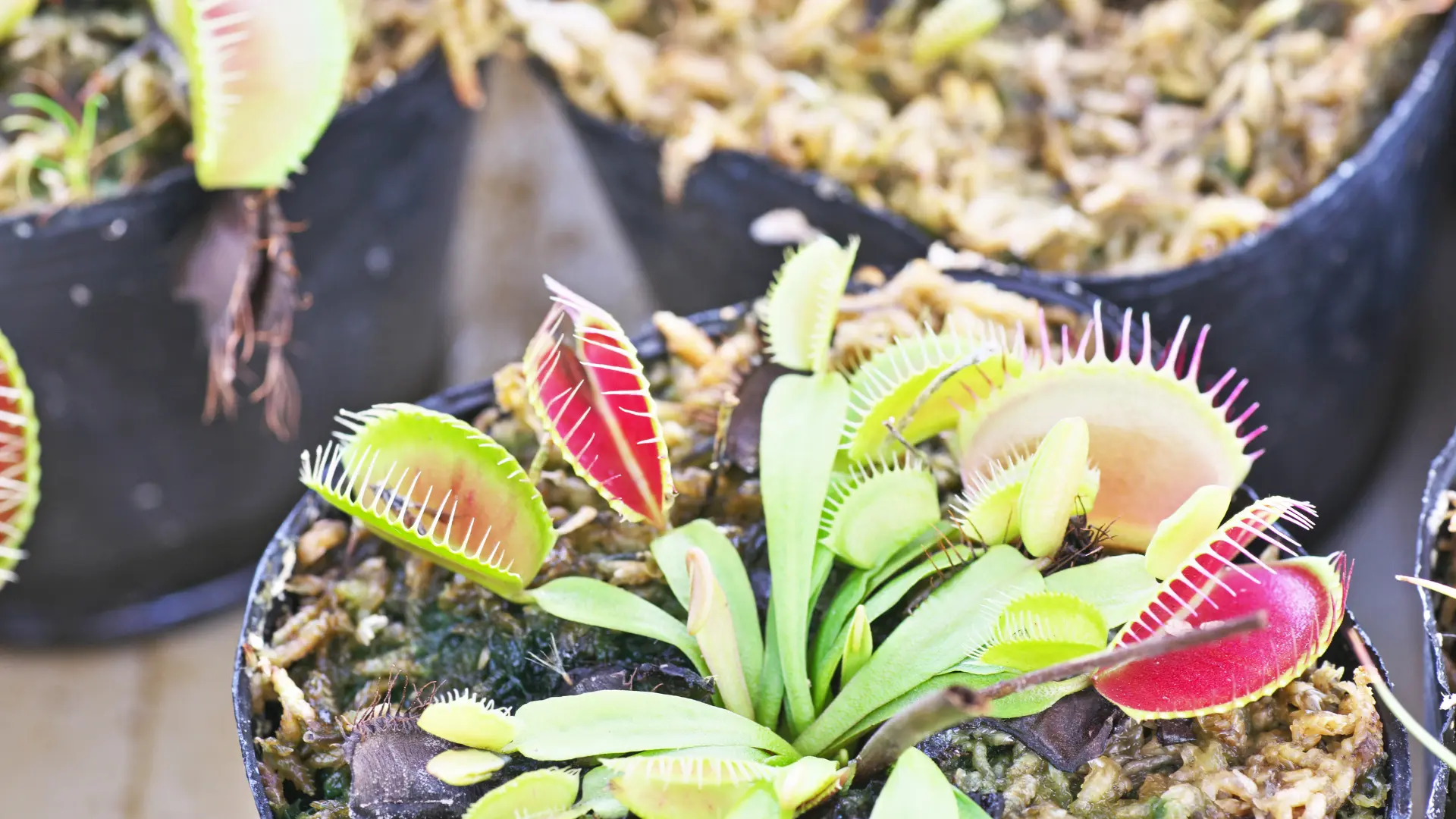Venus flytraps are among the most attractive plants you can grow on your garden. These plants flourish in areas with an abundance of heat, sunlight, and water. Because their roots are adapted to thrive in bogs (a wetland), this plant will require constant moisture.
Venus flytraps are known for their ability to capture insects and bugs. They grow best outside but can be cultivated indoors if the proper circumstances are met. It is one of my best plants to grow. In this article, I will educate you on the fundamentals of Venus fly watering.
How Often Should I Water A Venus Flytrap?

Watering Venus flytraps can be difficult because they require precise irrigation and humidity levels to stay healthy. Water Venus flytraps every two to four days, according to the season. The soil must be moist but not inundated at all times. They need to be hydrated when the soil is slightly less damp but not completely dry. The water tray method is an efficient way to keep Venus flytraps healthy.
During the growing season, keep the soil of your Venus flytrap always wet. Depending on your pot’s size and how arid and hot it is where you live, you may have to water your Venus flytrap regularly. Venus Flytraps should be hydrated when the soil is just slightly damp and should be irrigated well before allowing the soil to dry to the level of being moist before watering again. Smaller pots might dry out in a day if the weather is hot and dry in the summer.
How Much To Water Venus Flytrap
Finding the proper mix of how much water Venus flytraps require can take time and effort for many people. Venus flytraps are indigenous to South and North Carolina in the United States. They are subjected to high humidity levels and abundant rainfall in the wild all year. When cultivating Venus flytraps at home, you must mimic its native habitat, including the watering frequency.
Water Venus flytraps frequently until the soil becomes moist all around. Then there is no need to water the soil till it is less humid. Never let the soil dry out. After watering a Venus flytrap, push the soil and feel the humidity throughout without getting saturated.
The frequency of irrigation varies substantially depending on the environmental circumstances. As a result, pushing on the soil to test its humidity is a superior method. Summer in my neighborhood is scorching (110 F+). During the summer, I water my plants nearly every day. However, in milder weather or inside, you might only have to water your plant a handful of times per week.
How To Water Venus Flytraps

You can water your plant with different styles, which include:
- Water Tray Method
Watering carnivorous plants is a delight with the water tray method. It shows the actions to take and the amount of water needed to maintain your Venus flytraps healthy. For Venus flytraps, the water tray approach is ideal. The following is how it works:
- Get yourself a shallow plastic or glazed ceramic tray.
- Insert your plant’s pot into the water tray.
- Fill the water tray to 1 inch with pure water (distilled water, reverse osmosis water, or rainwater).
- As soon as the tray dries, refill the water.
The water tray method ensures that the soil for your Venus flytrap maintains humidity while never exceeding the required moisture. It also is an excellent idea to keep a little water reserve on hand for added flexibility.
Once or twice a week, I replace the trays for my Venus flytraps. It is acceptable to leave them with a tray full of water if I am out of town for a few days. This procedure necessitates the use of a pot featuring drainage. If your plant’s pot lacks drainage, consider repotting it.
- Watering From The Top
Watering from the top is the most typical method and is appropriate for Venus flytraps. However, it is more difficult because finding the correct balance is tricky. In this step, you must continuously pour water over your soil until water starts running out of the drainage holes. Endeavor to avoid watering your leaves.
- Watering Bath
This method involves the following steps:
- Fill a container halfway with room-temperature water.
- Lower the entire container into the water, stopping where the plant’s stem begins. Make sure that you submerge all of the soil in water.
- The water will now begin to bubble; wait until it stops.
- Lift the pot and allow the excess to drain.
- Replace your plant in the cachepot or on the tray.
Underwatering A Venus Flytrap
Most carnivorous plants, like the Venus flytrap, require a steady water supply to thrive. If your plant’s soil becomes dry between waterings, it will wilt. Underwatering a Venus flytrap will significantly weaken it. The plant will begin to sag or droop, a\nd the leaves will start to dry out. If the earth fully dries out, the plant will peri\sh as well. If the bulb dries up, the plant will not recover.
Since Venus flytraps require continually moist soil and high humidity, allowing the plant to become too dry can result in browning, crispy leaves, and traps. Keep your plant moderately damp (but not soggy) at all times, and consider putting it near a humidifier.
How To Solve Underwatering Problems
To solve underwatering problems, you have to water your plants thoroughly and generously. It gives your plant enough moisture needed for growth.
Overwatering A Venus Flytrap
Overwatering encourages the growth of dangerous germs and fungi. When the soil becomes wet, fungi and bacteria begin to consume the bulb of your Venus flytrap. Venus flytraps live in humid environments in the wild. They are not aquatic plants and are not adapted to swampy conditions.
Overwatering a Venus flytrap is also quite dangerous. A few indicators can assist us in identifying whether or not a plant has been overwatered. First, a coating of white mold may form in the soil. The mold will not destroy the plant but indicates too much moisture. Algae growth on the water tray also shows high humidity and a lack of sunlight.
Overwatering can cause root rot in Venus flytraps. Root rot is a dangerous ailment that eats away the plant’s roots and eventually destroys them. Changes in your plant’s bulb are unmistakable indicators of root rot. To confirm root rot, you must remove the plant from the soil. A healthy bulb is white with a pink tinge around the margins. Dark patches or blotches appear on rotting bulbs. A rotting bulb also has a mushy and slimy texture. Fortunately, you can save a Venus flytrap suffering from root rot.
How To Solve Overwatering Problems
You can solve overwatering issues by doing the following:
- Remove the plant from its container and extract all soil from its roots. After that, inspect the plant’s roots (which are naturally black) to see if there is any mold or fungi. If there is, remove the afflicted sections while being careful not to remove any nutritional components.
- Examine your plant’s rhizome (where all the leaves originate); it should be white or pale yellow.
- Afterward, gently pat the roots dry with a paper towel before replanting your venus fly trap in new media and watering less frequently.
